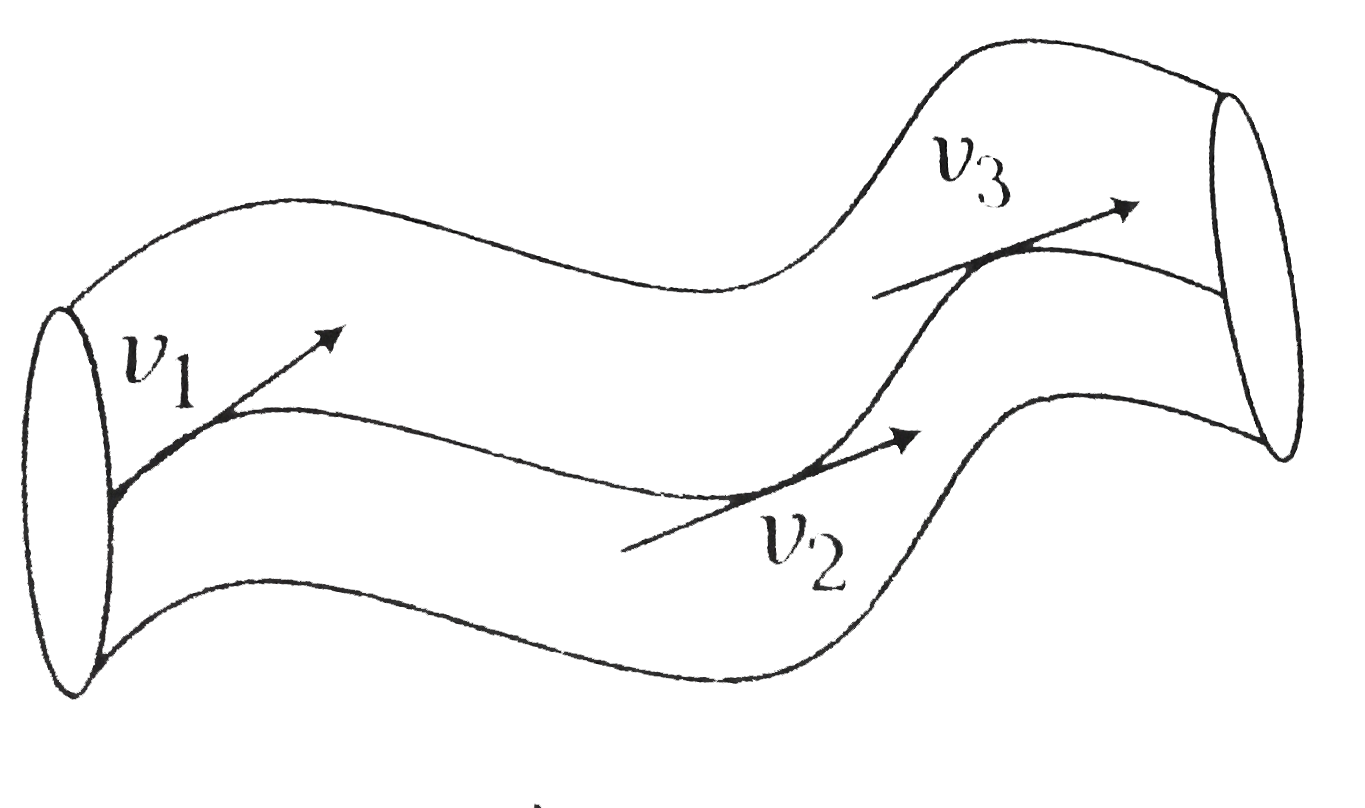Streamline flow is more likely for liquid with
1. high density and high viscosity
2. low density and low viscosity
3. high density and low viscosity
4. low density and high viscosity
The correct Answer is:D
To determine the conditions under which streamline flow is more likely for a liquid, we need to analyze the factors that influence the Reynolds number (Re). The Reynolds number is given by the formula:
Re=ρVDμ
Where:
- ρ = density of the fluid
- V = velocity of the fluid
- D = characteristic length (diameter of the pipe or flow channel)
- μ = dynamic viscosity of the fluid
1. Understanding Streamline Flow:
Streamline flow (or laminar flow) occurs when the Reynolds number is low (typically Re<2000). This means that the flow is smooth and orderly.
2. Analyzing the Options:
We will evaluate each option in terms of how they affect the Reynolds number.
- Option 1: High density and high viscosity:
- Increasing both ρ and μ would lead to an increase in the Reynolds number, making it less likely for the flow to be streamline.
- Conclusion: Incorrect.
- Option 2: Low density and low viscosity:
- While low density (ρ) favors a lower Reynolds number, low viscosity (μ) increases the Reynolds number.
- The combined effect does not favor streamline flow.
- Conclusion: Incorrect.
- Option 3: High density and low viscosity:
- High density increases the Reynolds number, while low viscosity decreases it. However, the increase due to high density outweighs the decrease due to low viscosity.
- Conclusion: Incorrect.
- Option 4: Low density and high viscosity:
- Low density decreases the Reynolds number, and high viscosity also decreases the Reynolds number.
- Both factors favor a lower Reynolds number, making streamline flow more likely.
- Conclusion: Correct.
3. Final Answer:
The option that makes streamline flow more likely for a liquid is Option 4: Low density and high viscosity.
- ρ = density of the fluid
- V = velocity of the fluid
- D = characteristic length (diameter of the pipe or flow channel)
- μ = dynamic viscosity of the fluid
Streamline flow (or laminar flow) occurs when the Reynolds number is low (typically Re<2000). This means that the flow is smooth and orderly.
We will evaluate each option in terms of how they affect the Reynolds number.
- Increasing both ρ and μ would lead to an increase in the Reynolds number, making it less likely for the flow to be streamline.
- Conclusion: Incorrect.
- While low density (ρ) favors a lower Reynolds number, low viscosity (μ) increases the Reynolds number.
- The combined effect does not favor streamline flow.
- Conclusion: Incorrect.
- High density increases the Reynolds number, while low viscosity decreases it. However, the increase due to high density outweighs the decrease due to low viscosity.
- Conclusion: Incorrect.
- Low density decreases the Reynolds number, and high viscosity also decreases the Reynolds number.
- Both factors favor a lower Reynolds number, making streamline flow more likely.
- Conclusion: Correct.
The option that makes streamline flow more likely for a liquid is Option 4: Low density and high viscosity.
Topper's Solved these Questions
- BOOK - NCERT FINGERTPS ENGLISHCHAPTER - MECHANICAL PROPERTIES OF FLUIDSEXERCISE - Higher Order Thinking Skills8videos
MECHANICAL PROPERTIES OF FLUIDS
- BOOK - NCERT FINGERTPS ENGLISHCHAPTER - MECHANICAL PROPERTIES OF FLUIDSEXERCISE - Exemplar Problems5videos
MECHANICAL PROPERTIES OF FLUIDS
- BOOK - NCERT FINGERTPS ENGLISHCHAPTER - LAWS OF MOTIONEXERCISE - Assertion And Reason15videos
LAWS OF MOTION
- BOOK - NCERT FINGERTPS ENGLISHCHAPTER - MECHANICAL PROPERTIES OF SOLIDSEXERCISE - Assertion And Reason15videos
MECHANICAL PROPERTIES OF SOLIDS
Similar Questions
For a stream line flow of water following statements are given below
(a) Two streamlines do not intersect each other.
(b) streamlines must be straight.
(c) streamlines flow is more likely for liquids with low density and height viscosity.
(d) streamlines flow is more likely for liquids with high density and low viscosity.View SolutionAssertion: The velocity of flow of a liquid is smaller when pressure is larger and vice versa.
Reason: According to Bernoulli's theorem, for the stream line flow of an ideal liquid, the total energy per unit mass remains constant.View Solution
Knowledge Check
- Question 1 - Select One
Under a constant pressure head, the rate of flow of orderly volume flow of liquid through a capillary tube is V. IF the length of the capillary is doubled and the diameter of the bore is halved, the rate of flow would become
AV/4B16 VCV/8DV/32
Consider streamline flow of a liquid flowing through a tube as shown in the figure which of the following is correct regarding velcities of liquid at different points ?
 View Solution
View SolutionStreamline motion is that motion in which there is-
View SolutionWhat is laminar flow of liquid?
View SolutionAn ideal fluid is flowing in a pipe in streamline flow. Pipe has maximum and minimum diameter of 6.4 cm and 4.8 cm respectively. Find out the ratio of minimum to maximum velocity.
View SolutionAn ideal fluid is flowing in a pipe in streamline flow. Pipe has maximum and minimum diameter of 6.4 cm and 4.8 cm respectively. Find out the ratio of minimum to maximum velocity.
View SolutionWhich N of guanidine (I) is more basic and is more likely to be protonated ?
View SolutionTwo liquids of densities d1 and d2 are flowing in identical capillaries under same pressure difference. If t1 and t2 are the time taken for the flow of equal quantities of liquid, then the ratio of coefficients of viscosities of liquids must be
View Solution

